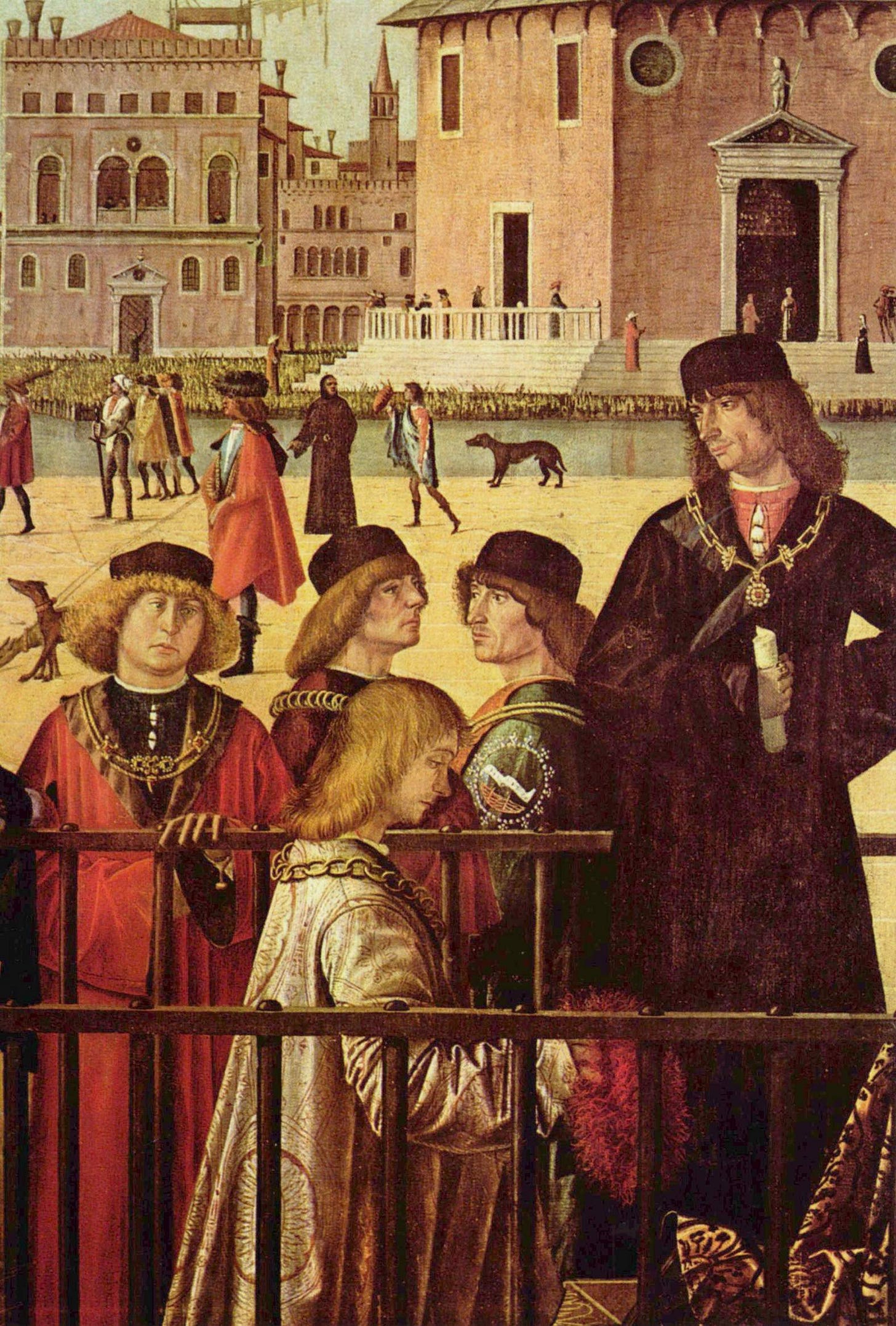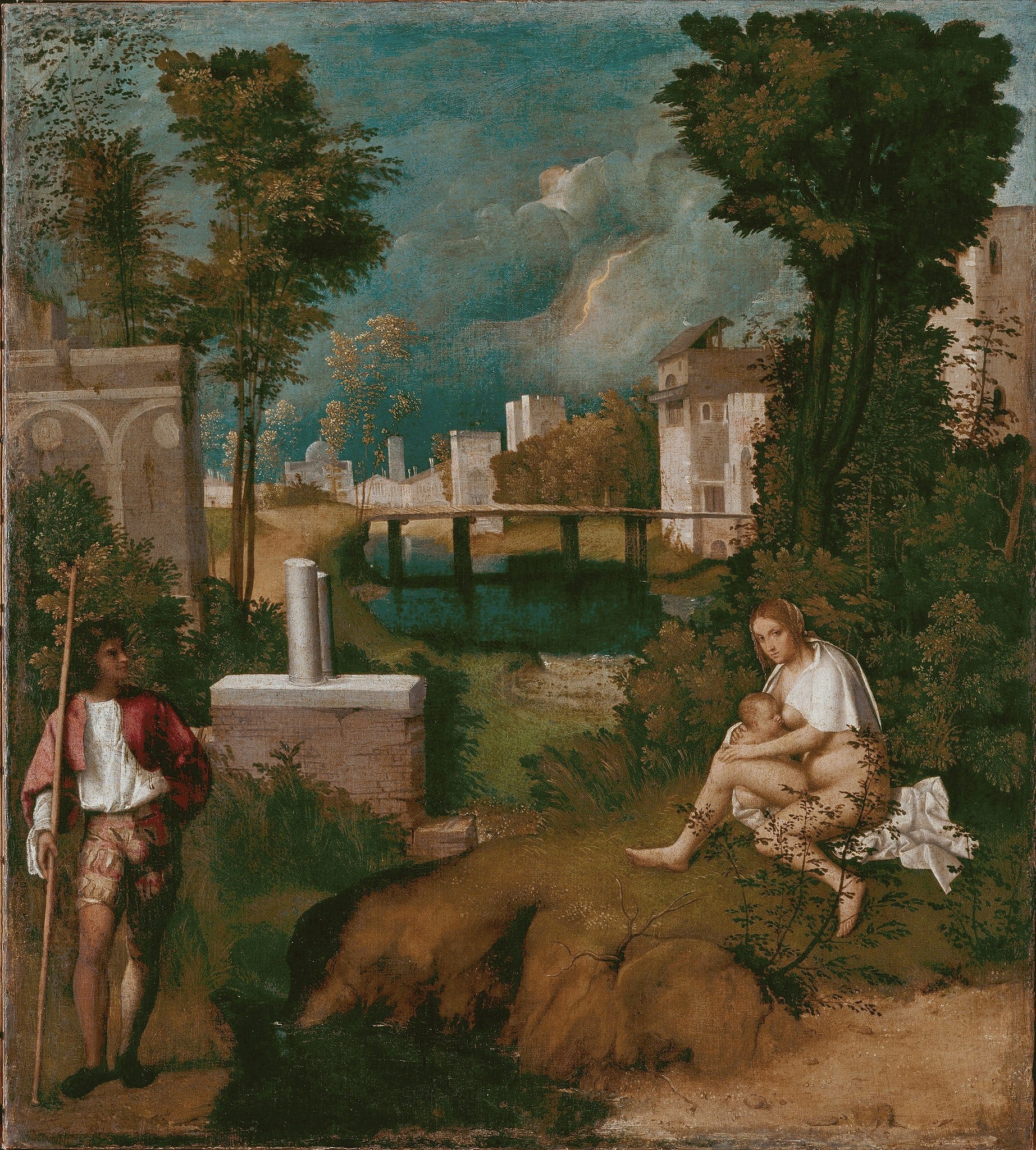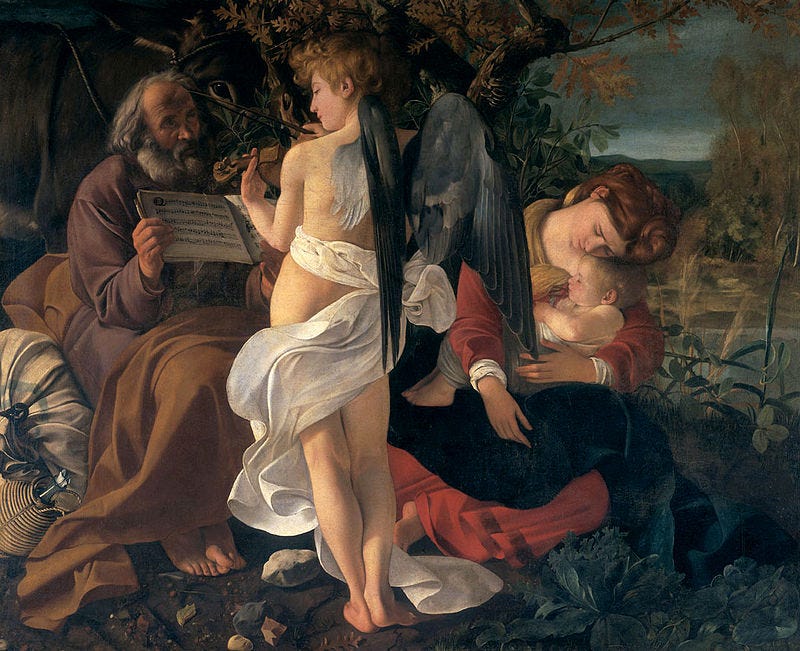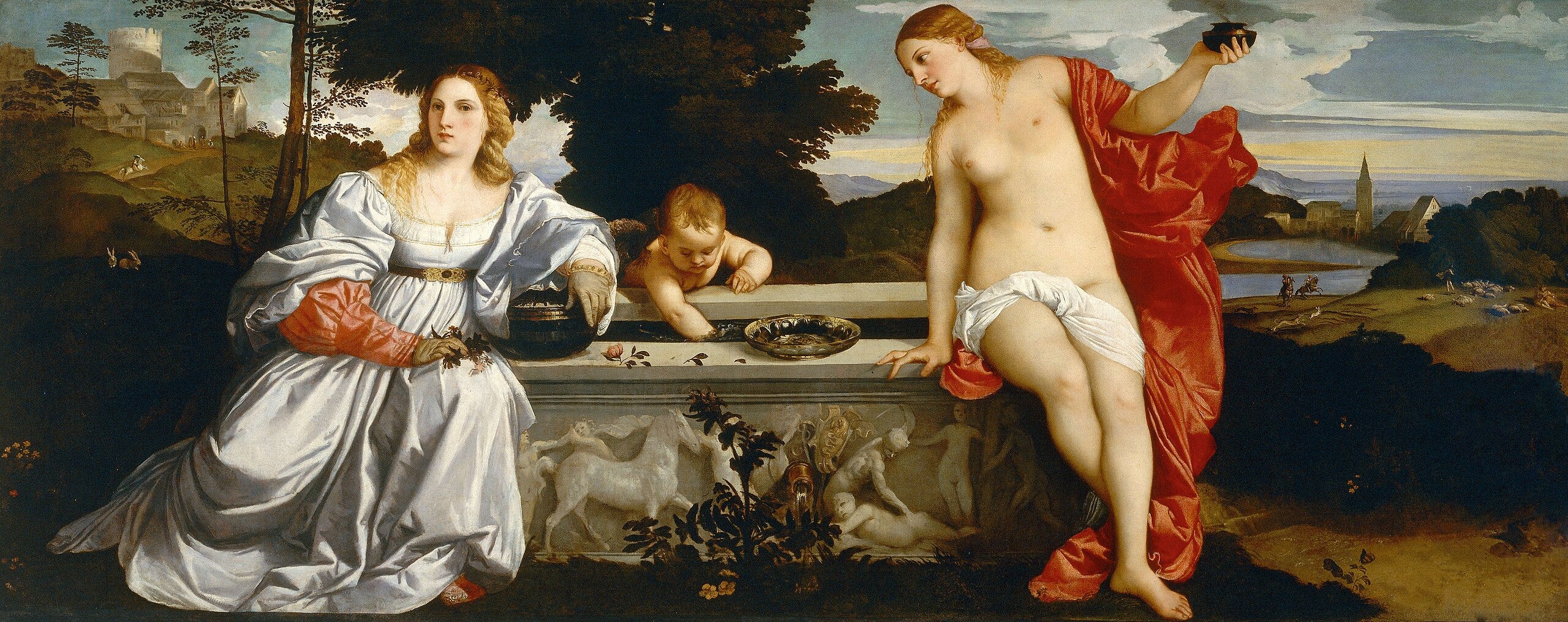On the first landscape in Western art
Or: Lord Byron’s favourite painting & one of the greatest mysteries of the Renaissance
The artworks featured in this post look best on larger screen sizes. To get the optimal visual experience, view this page on substack.com (not in your email) on a desktop or laptop computer.
The Painting
The Tempest is a painting by Italian Renaissance master Giorgione, created sometime between 1505 and 1508 in Venice. It is a bizarre painting.
On the right, a scantily clad woman nurses a baby as she gazes at the viewer. Her pose strikes us as unnatural. A suckling infant would normally be placed on its mother’s lap, but here it is positioned at her side, revealing her pubic area.
On the left stands a young man holding a staff or a pike, his face frozen in a perennial smirk (or a coy smile?) as he glances to the left. Strangely, he does not appear to be looking at the woman, almost as if he were oblivious to her presence.
And then there is the painting’s third — and perhaps main — subject: the storm. Which is not even there. A presence of absence.
[P]resence of absence. This is the ability to render a room without people or narrative action and yet somehow convey the sense of their being in the space — a lingering life force, as if someone has just departed or is about to arrive.
David Gariff, “The Presence of Absence”
The entire composition seems to anticipate the imminent doom. The gathering shadows. The subdued blues and greens. The heavy sky. The lightning piercing the clouds. One can almost hear an invisible wind rustling up in the treetops.
The Riddle
Who are these people? Where are they? And why are they lounging around, half-naked and ostensibly unbothered, mere moments before the onset of a storm — far from the protective confines of what looks like a walled city, no less?
Wouldn’t you like to know.
The Theories
We know nothing about the painting’s subjects or its meaning. The author has provided no interpretation — rather unusual for the time — leaving his contemporaries and generations of critics and art aficionados in the dark.
Even the title The Tempest (Italian La tempesta) was coined in 1894. Prior to that, the painting was traditionally known in Italy as The Gipsy Woman and the Soldier (La zingara e il soldato) or The Gipsy Girl and the Soldier (La zingarella e il soldato).
When the female figure is not described as a gipsy, she is identified — insightfully — as a “woman”. The male subject has also been described as a gipsy as well as a soldier, a shepherd, and a member of a Venetian bachelor club.
Some scholars believe the composition to be a Biblical scene. The walled city represents Paradise, and the three figures are Adam and Eve with baby Cain. The lightning symbolises God, who has just banished them from Eden.
To some, the painting depicts the flight into Egypt.
Others have suggested that The Tempest may be Giorgione’s interpretation of a mythological scene — Paris and Oenone, perhaps, or Iasion and Demeter.
Yet another approach sees the painting as a socio-political allegory; a vision of a once peaceful and thriving Veneto. The idyll stands in stark contrast to the tumultuous present, a period during which Venice fought in the bloody War of the League of Cambrai (1508–1516).
The most light-hearted theory identifies the young man as belonging to the hilariously named Confraternities of the Sock (Compagnie della calza), Venetian theatrical associations whose members sported extravagant hosiery and staged plays in rustic settings.

And then there are the critics who throw their hands up in the air and suggest that perhaps Giorgione had no subject or overarching theme in mind.
Mind you, these theories barely scratch the surface. Over the centuries, The Tempest has spurred over a hundred different proposals for its subject, none of them conclusive.
It must be said that this is by no means the only work of Giorgione’s that puzzled his contemporaries. Giorgio Vasari, the father of art history and the biographer of the Italian Renaissance, wrote in exasperation that he never understood some of Giorgione’s works. He described the artist’s frescoes in the Fondaco de’ Tedeschi in Venice thus:
[T]here are no scenes to be found there with any order, or representing the deeds of any distinguished person, either ancient or modern; and I, for my part, have never understood them, nor have I found, for all the inquiries that I have made, anyone who understands them, for in one place there is a woman, in another a man, in diverse attitudes, while one has the head of a lion near him, and another an angel in the guise of a Cupid, nor can one tell what it may all mean.
G. Vasari, “Giorgione”, The Lives of the Artists (1550)
No wonder The Tempest was Lord Byron’s favourite painting. He allegedly loved that its ambiguity allowed viewers to come up with their own interpretations.
The Artist
Ultimately, the desperate attempts to decode The Tempest tell us more about their authors than about Giorgione.
Very little is known for certain about his work, patrons, or life, so it is entirely possible that five centuries’ worth of criticism and scholarly debates have over-intellectualised the artist beyond recognition.
There is no evidence that Giorgione had advanced education, and only six surviving paintings are definitively credited to him. There are also records of him meeting Leonardo da Vinci when he visited Venice in 1500.
Contemporary accounts report that Giorgione was a gifted musician and singer, an enthusiastic lover, and quite the charmer, albeit of humble stock:
He [...] took unceasing delight in the joys of love; and the sound of the lute gave him marvellous pleasure, so that in his day he played and sang so divinely that he was often employed for that purpose at various musical assemblies and gatherings of noble persons.
G. Vasari, “Giorgione”, The Lives of the Artists (1550)
Perhaps the most fascinating anecdote of Giorgione’s life, as recounted by Vasari, was the time he fell into an argument with a group of sculptors. They claimed that their art, which showed various attitudes and aspects in a single figure, was superior to painting, which could only show one side of a figure. Giorgione proved them wrong most ingeniously:
He painted a naked man with his back turned, at whose feet was a most limpid pool of water, wherein he painted the reflection of the man’s front. At one side was a burnished cuirass that he had taken off, which showed his left profile [...]; and on the other side was a mirror, which reflected the other profile of the naked figure; [...] whereby he sought to prove that painting does in fact, with more excellence, labour, and effect, achieve more at one single view of a living figure than does sculpture.
G. Vasari, “Giorgione”, The Lives of the Artists (1550)
Giorgione’s life was tragically cut short by the plague in 1510 when he was only 34.
By then, he had “surpassed by a great measure not only the Bellini, whom the Venetians held in such esteem, but also every other master who had painted up to that time in that city,” establishing himself as one of the greatest — and most enigmatic — figures in Western art.
The Legacy
The innovations and experimentation in The Tempest helped revolutionise European art — and, by extension, the way we see and think about the world.
Giorgione exerted particular influence on the development of Venetian painting, freeing it from the rigid shackles of tradition and imbuing it with new-found creative freedom and technical mastery. His contribution is comparable to the revolution made by Leonardo in Tuscan painting a couple of decades earlier.
The Tempest was one of the first works to use colour as a dominant expressive element. This feature would come to define Venetian painting, reaching its ultimate expressive height in Giorgione’s colleague Titian.
This helped differentiate and emancipate the Venetian school from its Tuscan counterpart, which emphasised design over colour and relied on detailed preliminary drawings. In contrast, technical examinations of The Tempest show that the artist used minimal sketches and a largely improvisational approach.
The apparent lack of an overarching theme or subject matter suggests the painting may have been intended as a fantasia (fantasy) or a capriccio (a fictional topographical scene) whose message is intentionally left ambiguous.
If so, The Tempest practically invented the poesia, a Renaissance painting genre that sought to emulate the musical and emotional qualities of verse. The goal was to create “visual poetry” and elicit complex and highly idiosyncratic reactions in the viewer.
But perhaps the most remarkable thing about The Tempest is that it is one of the first Western artworks to be labelled a landscape.
Giorgione could have treated the countryside as a mere backdrop, following fifteenth-century conventions that gave scale, composition, and human figures central importance.
Instead, he painted the landscape first without reserving any space for the figures, which he added last and on top of the finished countryside, almost as an afterthought.
As a result, traditional narrative elements — man, woman, child — retreat to the periphery. The land, the atmosphere, and the silent but inevitable approach of the storm reveal themselves as the painting’s true subjects, transcending petty human drama.








